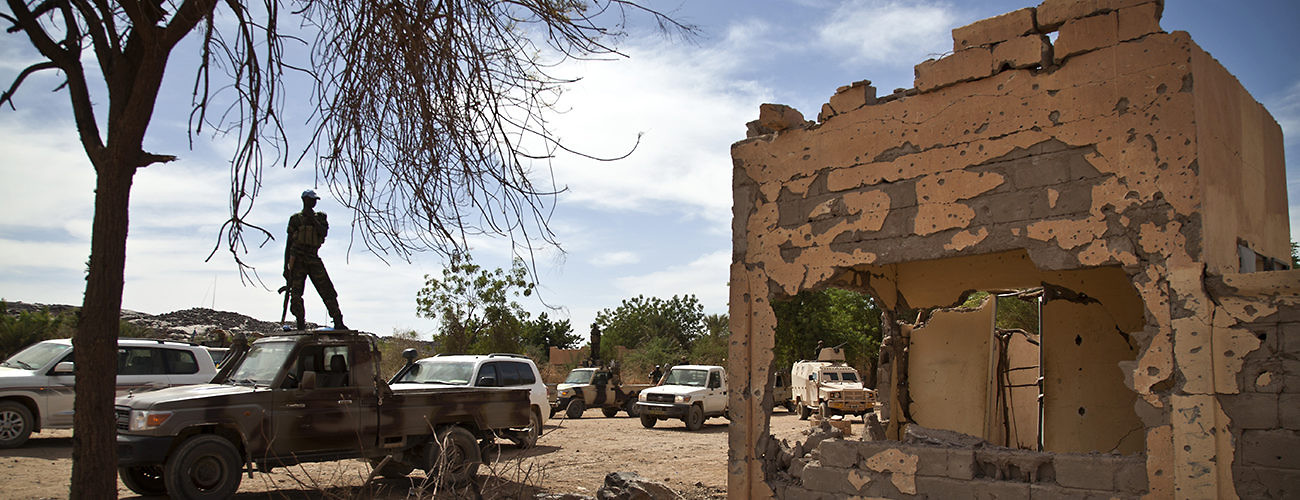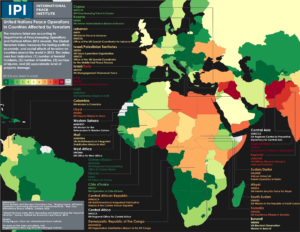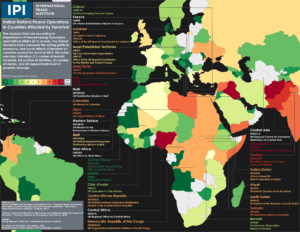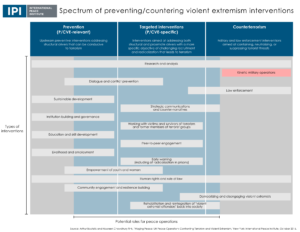A Chadian peacekeeper with the UN mission in Mali (MINUSMA) stands at the site of a suicide attack in Tessalit, Mali, November 3, 2013. UN Photo/Marco Dormino.
Of the eleven countries most affected by terrorism globally, seven currently host UN peace operations. In countries affected by terrorism and violent extremism, peace operations will increasingly be called upon to adapt their approaches without compromising UN doctrine. But to date, there has been little exploration of the broader political and practical challenges, opportunities, and risks facing UN peace operations in complex security environments. This has created a gap between the policy debate in New York and the realities confronting UN staff on the ground.
This policy paper aims to bridge this gap by examining the recent drive to integrate counterterrorism (CT) and preventing and countering violent extremism (P/CVE) into relevant activities of UN peace operations, as well as the associated challenges and opportunities. It seeks to expand the scope of discussions beyond whether peace operations can “do CT” to how they can better support national governments and local communities in preventing terrorism and violent extremism.
Based on extensive conversations with UN officials, member state representatives, and practitioners, the paper offers a number of recommendations. At the level of headquarters, the UN should:
- Improve its capacity to analyze and respond to the factors and grievances leading to radicalization and violence;
- Enhance system-wide dialogue, coherence, and policy guidance; and
- Prioritize objectives and capacities related to CT and P/CVE in mission mandates.
To make field missions more effective, the UN should:
- Preserve and expand the space for dialogue with all parties;
- Enhance capacity for early warning and response;
- Integrate CT and P/CVE into compacts with host governments where relevant;
- Enhance mission engagement with civil society, women, and youth;
- Design integrated strategies to prevent terrorism and violent extremism;
- Promote partnerships between missions, country teams, and NGOs;
- Improve capacity to monitor, evaluate, manage risk, and learn;
- Employ caution in labeling programs as “P/CVE”; and
- Improve training and raise the awareness of mission staff.











